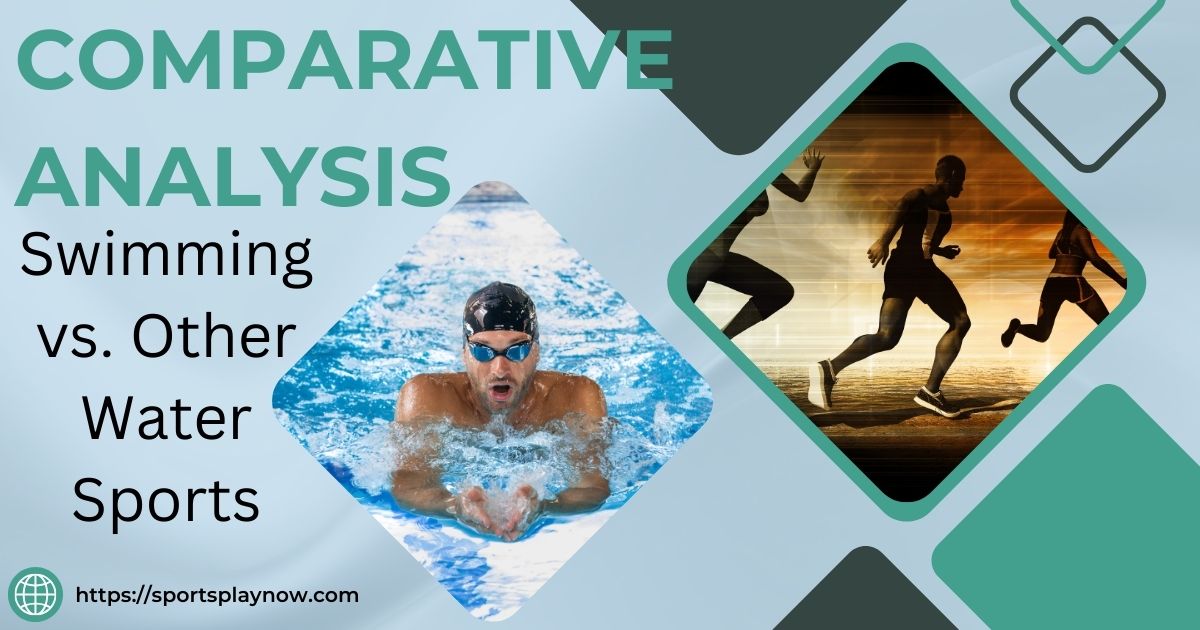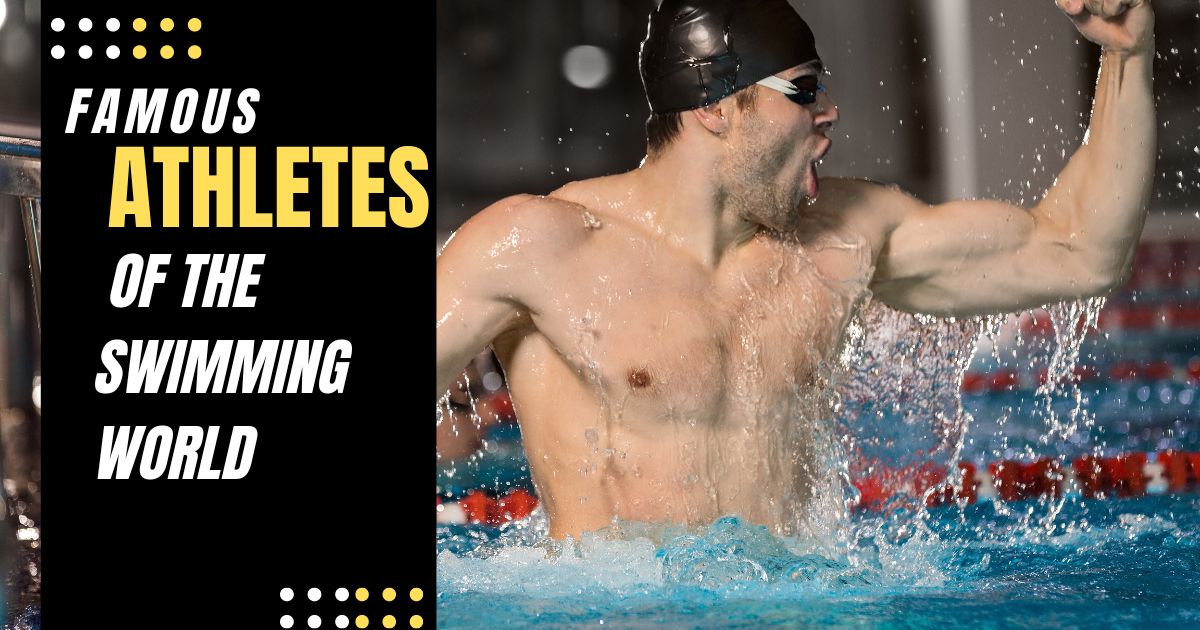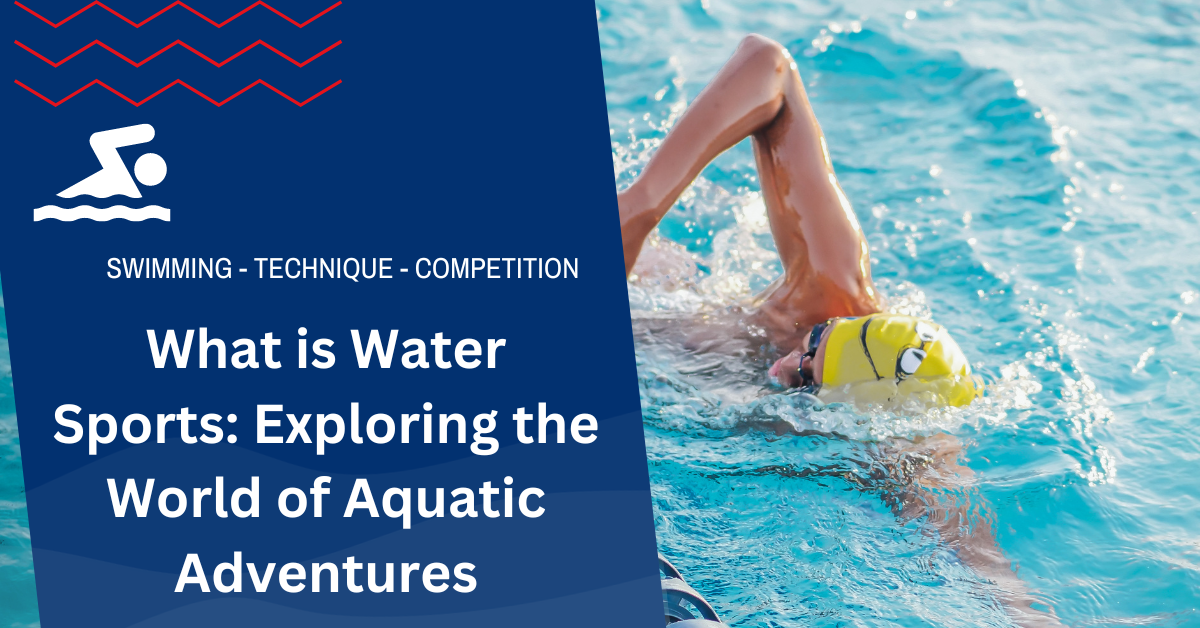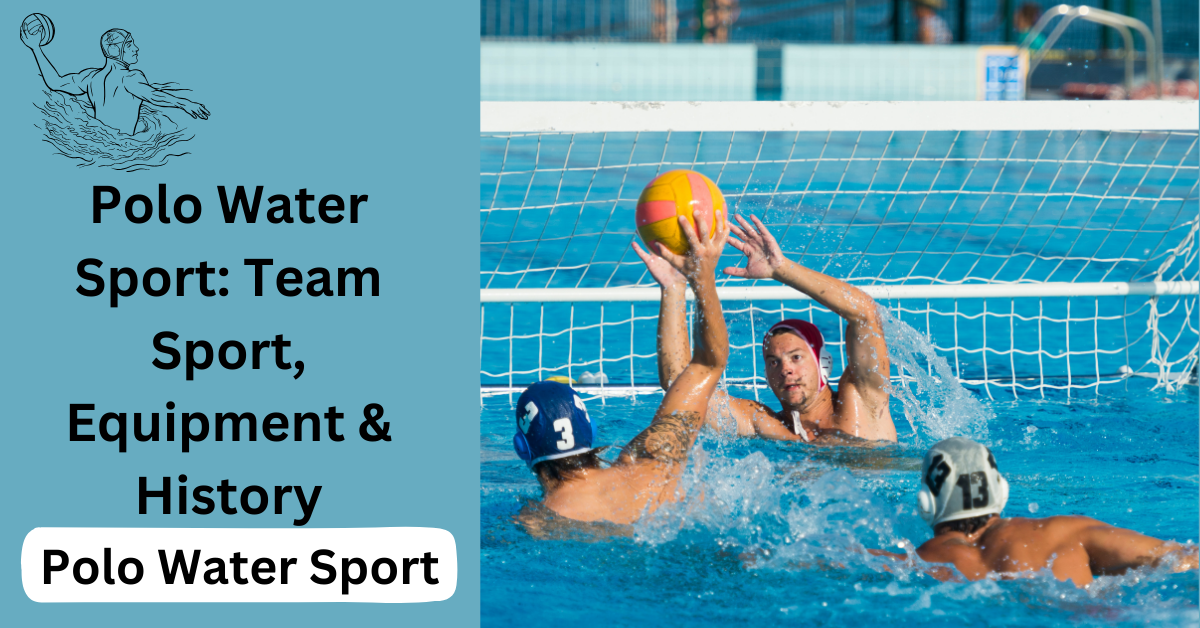What is the Most Popular Water Sport in the World?: In this computerized time, everybody is active on versatile phone or internet. But they do not have time for their fitness. Swimming is a generally well known water sport that can be delighted in by individuals of all ages and skill levels.
It is too a pivotal life aptitude, making it a prevalent action for children to learn. But water sports that support human wellbeing are open to individuals of all ages and aptitude levels, and can be delighted in in a assortment of settings, from pools to seas. And other prevalent water sports incorporate surfing, kayaking and plunging, each with its possess unmistakable fan base and one of a kind offer.
Swimming not as it were keeps up wellbeing but moreover advances wellness and amusement at the worldwide level. In today’s article, we will tell you almost swimming and tell you all almost its preferences and impediments.
Defining Water Sports: What Qualifies?
Water sports are recreational or competitive exercises that take put in or on water bodies, such as seas, lakes, streams, or swimming pools. They envelop a wide extend of exercises, counting swimming, surfing, kayaking, cruising, jumping, and water skiing.
To qualify as a water don, an movement must fundamentally include water as the medium for cooperation, whether for fun, wellness, or competition. Security gear and natural contemplations are too vital angles of characterizing water sports, guaranteeing that members lock in dependably and economically.
The Popularity of Swimming: A Global Review
Swimming is one of the most well known water sports around the world, celebrated for its openness and wellbeing benefits. It is practiced in different settings, from open pools to normal bodies of water, making it engaging to individuals of all ages and expertise levels.
Occasions like the Olympics grandstand swimming on a worldwide organize, advance boosting its notoriety. Social conventions and community programs moreover empower swimming, advancing security and wellness. As a result, swimming remains a imperative portion of recreational and competitive exercises over the globe.
Swimming: The Most Accessible Water Sport
Swimming is broadly respected as the most available water don due to its moo boundaries to section. Individuals can swim in different situations, counting pools, lakes, and seas, frequently without requiring specialized gear.
Numerous communities offer swimming lessons and free open get to to pools, making it simple for people of all ages and foundations to learn. Furthermore, swimming advances physical wellness, security, and satisfaction, making it an basic life aptitude that empowers support and engagement in water-related exercises.
Cultural Significance of Swimming Around the World
Swimming holds social noteworthiness over the globe, symbolizing different values such as community, wellbeing, and convention. In numerous societies, water is seen as a source of life and spirituality, driving to customs and ceremonies that consolidate swimming.
For illustration, in a few Innate societies, swimming is portion of community social occasions and celebrations. Also, swimming advances inclusivity, cultivating social bonds among individuals.
The don is regularly highlighted in national occasions and celebrations, reflecting its significance in neighborhood personality and legacy, whereas too serving as a implies of educating imperative life abilities.
Historical Context: The Roots of Water Sports
Water sports have profound chronicled roots, dating back to antiquated civilizations. Early prove appears that swimming was practiced in old Egypt, Greece, and Rome, regularly for amusement and military preparing. As societies advanced, different water exercises risen, counting angling, canoeing, and paddling.
The approach of organized competitions, such as the old Olympic Diversions, assist popularized swimming and other water sports. Over the centuries, headways in innovation and security driven to the expansion of water sports, making them indispensably to social hones and relaxation exercises around the world. Nowadays, these sports reflect a wealthy history of human interaction with water.
Comparative Analysis: Swimming vs. Other Water Sports

Comparative Analysis: Swimming vs. Other Water Sports
Swimming stands out among water sports for its all inclusive openness and foundational nature. Not at all like specialized sports like surfing or jumping, swimming requires negligible gear and can be practiced in different situations, making it appropriate for all ages and aptitude levels.
Whereas other water sports may center on strategy or particular challenges, swimming emphasizes perseverance, speed, and strategy. Moreover, swimming is frequently a prerequisite for numerous water sports,
highlighting its significance as a life aptitude. By and large, swimming serves as both a recreational movement and a competitive wear, keeping up a special position in the broader scene of water sports.
Types of Water Sports: An Overview
Water sports incorporate a different scope of exercises, each offering extraordinary encounters and difficulties. Key classifications include:
- Swimming: Participating in different styles, from free-form to butterfly, frequently aggressive or sporting.
- Surfing: Riding waves on a surfboard, famous in waterfront regions and praised for its way of life.
- Plunging: Includes scuba jumping and free plunging, permitting investigation of submerged environments.
- Kayaking and Paddling: Rowing in a kayak or kayak, reasonable for waterways, lakes, and seas.
- Cruising: Utilizing wind to explore water in boats, underscoring expertise and collaboration.
- Water Skiing and Wakeboarding: Being pulled behind a boat on skis or a board, joining rate and gymnastics.
- Stand-Up Paddleboarding (SUP): Adjusting on a paddleboard while utilizing an oar to explore.
- Fly Skiing: Riding an individual watercraft, offering rushes and speed on vast water.
These games advance wellness, amusement, and association with water conditions, making them famous around the world.
Swimming Styles: Exploring Different Techniques
Swimming incorporates a few styles, each with unmistakable procedures and purposes. The fundamental styles include:
- Free-form: The quickest and most famous stroke, described by an other arm pull and a vacillate kick.
- Backstroke: Swimmers lie on their backs, utilizing an exchanging arm movement and a vacillate kick, making it the main stroke swum on the back.
- Breaststroke: Includes a synchronous arm pull and frog-like kick, zeroing in on skim and procedure as opposed to speed.
- Butterfly: A difficult stroke including a dolphin kick and synchronous arm developments, known for its power and mood.
- Individual Variety: A blend of every one of the four strokes in a solitary race, displaying flexibility and expertise.
Each style offers remarkable advantages and difficulties, adding to the general discipline of cutthroat and sporting swimming.
Competitive Swimming: A Deep Dive into the Sport
Competitive swimming is a profoundly organized sport that includes dashing in different styles and separations, administered by worldwide rules. Competitors compete in occasions like free-form, backstroke, breaststroke, and butterfly, frequently in both person and transfer groups.
Key competitions incorporate neighborhood meets, national championships, and prestigious worldwide occasions like the Olympics and World Championships. Swimmers prepare thoroughly, centering on strategy, perseverance, and speed, frequently utilizing specialized drills and quality preparing.
The wear emphasizes not as it were physical execution but moreover mental strength, as competitors endeavor for individual bests and platform wraps up. Competitive swimming cultivates a solid sense of community and sportsmanship among competitors.
Major Swimming Competitions Around the World
Significant swimming contests grandstand the game on both public and global stages. Key occasions include:
- Olympic Games: Held like clockwork, including the world’s best swimmers across different disciplines.
- FINA Big showdowns: A biennial occasion coordinated by the Global Swimming Organization, covering swimming, jumping, and water polo.
- World Swimming Titles: A progression of contests that incorporate both long course (50m) and short course (25m) designs.
- Public Titles: Different nations have yearly titles to decide the best swimmers inside their nation.
- Container Pacific Swimming Titles: A biennial meet including top swimmers from the Pacific Edge nations.
- Federation Games: A multi-sport occasion where part countries contend, including swimming occasions.
These rivalries feature athletic greatness as well as encourage worldwide brotherhood and sportsmanship in the swimming local area.
Important Benefits of Swimming for All Ages
Swimming offers various advantages for people, all things considered, including:
- Actual Wellness: It gives a full-body exercise, working on cardiovascular wellbeing, strength, adaptability, and perseverance.
- Low-Effect Exercise: Swimming is delicate on the joints, making it ideal for individuals with wounds or joint pain.
- Emotional well-being: The musical idea of swimming can diminish pressure, tension, and gloom while advancing unwinding.
- Fundamental ability: Figuring out how to swim is fundamental for wellbeing around water and can forestall suffocating.
- Social Connection: Swimming encourages local area through classes, groups, and sporting exercises, advancing interactive abilities and companionships.
- Restoration: Water treatment is frequently utilized for restoration, assisting people with recuperating from wounds and medical procedures.
Generally, swimming is a flexible movement that improves physical, mental, and social prosperity over the course of life.
Health Benefits of Swimming: More Than Just a Sport
Swimming offers a wide cluster of medical advantages past its job as a game:
- Cardiovascular Wellness: Ordinary swimming further develops heart and lung capability, improving in general cardiovascular wellbeing.
- Muscle Strength and Tone: It connects with numerous muscle gatherings, advancing strength, perseverance, and conditioning all through the body.
- Weight The board: Swimming consumes calories really, supporting weight control and fat misfortune.
- Stress Alleviation: The quieting impacts of water and musical developments assist with diminishing pressure and uneasiness levels.
- Further developed Adaptability: The scope of movement expected in swimming strokes improves adaptability and joint wellbeing.
- Upgraded Coordination: Swimming advances better body mindfulness and coordination through complex developments.
- Injury Counteraction: As a low-influence work out, it limits the gamble of injury contrasted with high-influence sports.
By and large, swimming is a comprehensive activity that upholds actual wellbeing and mental prosperity, making it an important movement for individuals, everything being equal.
Safety Precautions in Water Sports
Guaranteeing security in water sports is vital to forestall mishaps and wounds. Key safeguards include:
- Wear Fitting Stuff: Use life coats, head protectors, and other wellbeing hardware as expected for explicit exercises.
- Know Your Cutoff points: Pick water sports that match your expertise level and state of being to keep away from overexertion.
- Actually take a look at Conditions: Consistently evaluate climate and water conditions prior to partaking, including flows, tides, and perceivability.
- Remain Mindful: Watch out for environmental elements and possible dangers, like boats, hindrances, or changes in water levels.
- Swim with a Pal: Consistently participate in water exercises with an accomplice to upgrade wellbeing and give help if necessary.
- Learn Medical aid: Fundamental medical aid and CPR information can be lifesaving in crises.
- Follow Neighborhood Guidelines: Comply to rules and rules well defined for the area and kind of water sport.
By following these safeguards, members can appreciate water sports securely while limiting dangers.
Instruction and Training: How to Become a Better Swimmer
To improve as a swimmer, center around organized guidance and predictable preparation:
- Take Examples: Sign up for swimming classes with confirmed teachers to learn legitimate strategies and work on your abilities.
- Practice Routinely: Lay out a predictable practice plan, holding back nothing a few meetings each week to fabricate perseverance and strategy.
- Put forth Objectives: Characterize explicit, reachable objectives to follow progress and remain persuaded, whether it’s further developing rate, strategy, or perseverance.
- Work on Procedure: Spotlight on refining stroke mechanics, breathing, and turns. Video investigation can assist with distinguishing regions for development.
- Broadly educating: Take part in reciprocal activities, for example, strength preparing, adaptability exercises, or vigorous exercises, to upgrade generally speaking wellness.
- Join a Swimming club: Partake in a neighborhood swimming club or club for organized preparing and kinship with different swimmers.
- Remain Intellectually Engaged: Foster a positive mentality and practice perception methods to further develop execution and trust in the water.
By following these means, swimmers can upgrade their capacities and appreciate better progress in the water.
Training Regimens for Different Swimming Disciplines
Preparing regimens change by swimming discipline, zeroing in on unambiguous abilities and perseverance:
- Free-form: Stresses run spans, perseverance swims, and strategy drills. Incorporate fluctuated distances and speed work to further develop speed and endurance.
- Backstroke: Spotlight on creating shoulder strength and adaptability. Consolidate drills for body arrangement and breathing examples, alongside perseverance sets.
- Breaststroke: Focus on timing and method. Incorporate drills that seclude kick and pull stages, alongside strength preparing for leg power.
- Butterfly: Underscore center strength and mood. Use span preparing and procedure drills to further develop stroke proficiency and relaxing.
- Individual Mixture (IM): Train across every one of the four strokes, zeroing in on changes and generally perseverance. Consolidate sets that blend strokes to upgrade flexibility.
- Distance Swimming: Spotlight on oxygen consuming molding and pacing methodologies. Long, slow swims joined with span preparing assist with building perseverance.
- Run Preparing: Short, extreme focus spans with adequate rest periods to augment speed and power.
Every routine ought to incorporate a blend of procedure work, intense exercise, and strength molding custom-made to the swimmer’s objectives and discipline.
The Role of Technology in Modern Swimming
Innovation assumes a urgent part in upgrading execution and preparing in current swimming. Key headways include:
- Execution Investigation: Wearable gadgets, for example, swim watches and pulse screens, track measurements like stroke count, speed, and distance, giving important input to competitors.
- Video Examination: Mentors use video film to dissect swimmers’ procedures, considering designated enhancements in stroke mechanics and effectiveness.
- Savvy Pools: A few offices include innovation that actions lap times, stroke rates, and even offers intelligent preparation instruments, improving the preparation experience.
- Bathing suits and Stuff: Developments in bathing suit materials and plans lessen drag and further develop lightness, adding to quicker times.
- Virtual Instructing: Online stages and applications offer remote training and preparing programs, making proficient direction more available.
- Hydrodynamic Exploration: Advances in liquid elements assist swimmers with improving their procedures and comprehend the effect of body position on execution.
These mechanical headways add to further developed preparing approaches, execution examination, and generally speaking competitor advancement in the game of swimming.
Environmental Awareness: Protecting Our Waterways
Safeguarding streams is pivotal for supporting amphibian environments and advancing general wellbeing. Key drives include:
- Contamination Counteraction: Diminishing litter and synthetic spillover from agrarian and modern sources keeps up with clean water hotspots for swimming and different exercises.
- Preservation Endeavors: Supporting projects that safeguard normal living spaces and biodiversity guarantees the wellbeing of sea-going biological systems.
- Maintainable Works on: Empowering economical fishing, drifting, and swimming practices diminishes human effect on water bodies.
- Local area Commitment: Sorting out tidy up occasions and instructive projects brings issues to light about the significance of clean streams.
- Regulation Help: Upholding for natural regulations and strategies that safeguard water quality and access is fundamental for long haul manageability.
By encouraging ecological mindfulness, networks can appreciate protected and sound streams while saving them for people in the future.
Growth of Water Sports in Emerging Markets
The development of water sports in developing markets is driven by expanding intrigued in recreational exercises, urbanization, and get to to common water bodies. As expendable livelihoods rise, more individuals are looking for recreation and wellness alternatives, driving to more prominent support in exercises like swimming, kayaking, and surfing.
Governments and private organizations are contributing in foundation, such as swimming pools, water parks, and preparing offices, which advance energizes engagement. Furthermore, presentation to worldwide wearing occasions and social media has popularized water sports, motivating nearby communities to embrace these exercises. This development not as it were improves open wellbeing and wellness but too boosts tourism and nearby economies.
Impact of Social Media on the Popularity of Water Sports
Social media has altogether boosted the notoriety of water sports by making a stage for sharing encounters, tips, and accomplishments. Devotees utilize stages like Instagram, YouTube, and TikTok to grandstand their abilities, advancing a sense of community and rousing others to take part.
Influencers and competitors regularly highlight their experiences, making water sports more relatable and available to a broader gathering of people. Furthermore, social media campaigns can raise mindfulness for occasions and competitions,
drawing in more members and onlookers. This perceivability not as it were cultivates engagement but too empowers more youthful eras to investigate water sports, contributing to their development and notoriety around the world.
Famous Athletes of the Swimming World

Famous Athletes of the Swimming World
The swimming world has seen various amazing competitors who have made critical impacts on the don. Michael Phelps, the most brightened Olympian of all time, is known for his exceptional flexibility and record-breaking exhibitions. Katie Ledecky, an notorious remove swimmer, has re-imagined fabulousness in women’s swimming with different world records and Olympic gold decorations.
Other eminent figures incorporate Ryan Lochte, known for his sprinting ability, and Missy Franklin, who picked up popularity for her accomplishments in numerous occasions. These competitors not as it were exceed expectations in competition but moreover motivate future eras through their devotion and sportsmanship, clearing out a enduring bequest in the swimming community.
Men’s swimming world championships
| Aspect | Details |
|---|---|
| Governing Body | FINA (Fédération Internationale de Natation) |
| Frequency | Every two years |
| First Championship | 1973 in Belgrade, Yugoslavia |
| Events | Individual and relay events in various strokes (freestyle, backstroke, butterfly, breaststroke, individual medley) |
| Notable Distances | 50m, 100m, 200m, 400m, 800m, 1500m (freestyle) |
| Relay Events | 4x100m freestyle, 4x200m freestyle, 4x100m medley |
| Significance | One of the most prestigious competitions in swimming, showcasing top global talent |
| Recent Edition | (Insert year and host city of the most recent championships) |
| Record Holders | List of notable record holders (e.g., Michael Phelps, Ryan Lochte) |
| Next Edition | (Insert year and host city of the upcoming championships) |
Women’s swimming world championships
| Aspect | Details |
|---|---|
| Governing Body | FINA (Fédération Internationale de Natation) |
| Frequency | Every two years |
| First Championship | 1982 in Guayaquil, Ecuador |
| Events | Individual and relay events in various strokes (freestyle, backstroke, butterfly, breaststroke, individual medley) |
| Notable Distances | 50m, 100m, 200m, 400m, 800m, 1500m (freestyle) |
| Relay Events | 4x100m freestyle, 4x200m freestyle, 4x100m medley |
| Significance | One of the premier competitions in swimming, highlighting top female athletes |
| Recent Edition | (Insert year and host city of the most recent championships) |
| Record Holders | List of notable record holders (e.g., Katie Ledecky, Missy Franklin) |
| Next Edition | (Insert year and host city of the upcoming championships) |
The Future of Water Sports: Trends and Innovations
The future of water sports is balanced for development through innovative headways and advancing patterns. Advancements in hardware plan, such as lighter and more hydrodynamic materials for swimwear and watercraft, upgrade execution and security.
Expanding intrigued in eco-friendly hones is driving the improvement of feasible hardware and clean-up activities to secure oceanic situations. Virtual reality and increased reality advances are too rising, advertising immersive preparing encounters and improving fan engagement. Also, the rise of social
media proceeds to impact cooperation by advancing occasions and interfacing devotees. As water sports adjust to these patterns, they will likely ended up more comprehensive and available, pulling in a broader group of onlookers around the world.
Community and Social Aspects of Swimming
Swimming cultivates solid community ties and social intuitive, serving as a stage for people of all ages to interface. Neighborhood swim clubs and groups make a sense of having a place, where members construct fellowships whereas working towards common objectives.
Swimming classes frequently energize family support, advancing holding and shared encounters. Occasions like swim meets and community pool days bring individuals together, improving social engagement and solid competition.
Furthermore, swimming serves as a crucial instrument for inclusivity, permitting assorted bunches to take an interest and learn fundamental water security aptitudes. These community and social viewpoints make swimming not fair a wear, but a binding together movement that enhances lives.
Water Sports and Mental Health Benefits
Locks in in water sports offers critical mental wellbeing benefits, advancing generally well-being and enthusiastic strength. The calming impacts of water can diminish stretch and uneasiness, whereas the musical developments related with swimming or paddling empower mindfulness and unwinding.
Physical movement discharges endorphins, improving disposition and easing side effects of misery. Moreover, interest in water sports cultivates social associations, giving a sense of community and bolster that encourage contributes to mental wellbeing.
The immersive nature of these exercises empowers people to disengage from every day weights, advancing mental clarity and progressed self-esteem. Generally, water sports serve as a effective device for upgrading mental wellbeing and enthusiastic adjust.
what is the most popular water sport in the world
| Aspect | Details |
|---|---|
| Sport | Swimming |
| Global Popularity | Universally practiced across all age groups and cultures. |
| Accessibility | Requires minimal equipment; can be done in pools, lakes, and oceans. |
| Health Benefits | Improves cardiovascular fitness, strength, flexibility, and mental well-being. |
| Competitive Events | Includes Olympics, World Championships, and national competitions. |
| Cultural Significance | Integral to many cultures; often associated with community events, festivals, and traditions. |
| Key Techniques | Freestyle, backstroke, breaststroke, butterfly, and individual medley. |
| Training Opportunities | Available through swim schools, clubs, and community programs. |
| Social Aspects | Fosters community engagement, teamwork, and friendships among participants. |
| Future Trends | Increasing emphasis on technology in training, eco-friendly practices, and growing participation. |
FAQS About what is the most popular water sport in the world
1. What is considered the most popular water sport?
Swimming is generally viewed as the most well known water sport universally because of its availability and inescapable interest.
2. Why is swimming so popular?
Swimming is well known on the grounds that it tends to be finished by individuals of any age and ability levels, requires negligible gear, and gives critical medical advantages.
3. What are the health benefits of swimming?
Swimming works on cardiovascular wellness, develops fortitude and adaptability, advances mental prosperity, and is a low-influence practice that limits injury risk.
4. How does swimming compare to other water sports?
Swimming is frequently considered essential, as it fills in as an essential for some other water sports. It is more open and has more extensive investment contrasted with exercises like surfing or jumping.
5. Are there competitive swimming events?
Indeed, serious swimming highlights occasions like the Olympics, Big showdowns, and public rivalries, exhibiting different styles and distances.
6. Can anyone learn to swim?
Indeed, swimming examples are accessible for all ages, making it feasible for almost everybody to securely learn and appreciate swimming.
7. How does swimming impact mental health?
Swimming can diminish pressure and nervousness, further develop mind-set through the arrival of endorphins, and advance unwinding, contributing emphatically to psychological well-being.
Conclusion
Swimming stands out as the most prevalent water wear universally, celebrated for its availability and various benefits. As a foundational ability, swimming advances security and well-being, making it basic for individuals of all ages.
Its all inclusive offer is reflected in the endless number of members, from recreational swimmers to tip top competitors competing in prestigious occasions like the Olympics.
The don cultivates community, empowers wellness, and gives critical mental wellbeing benefits. As intrigued in water sports proceeds to develop, swimming remains at the cutting edge, rousing future eras to grasp the delight and significance of this life-enhancing movement.
















Leave a Reply